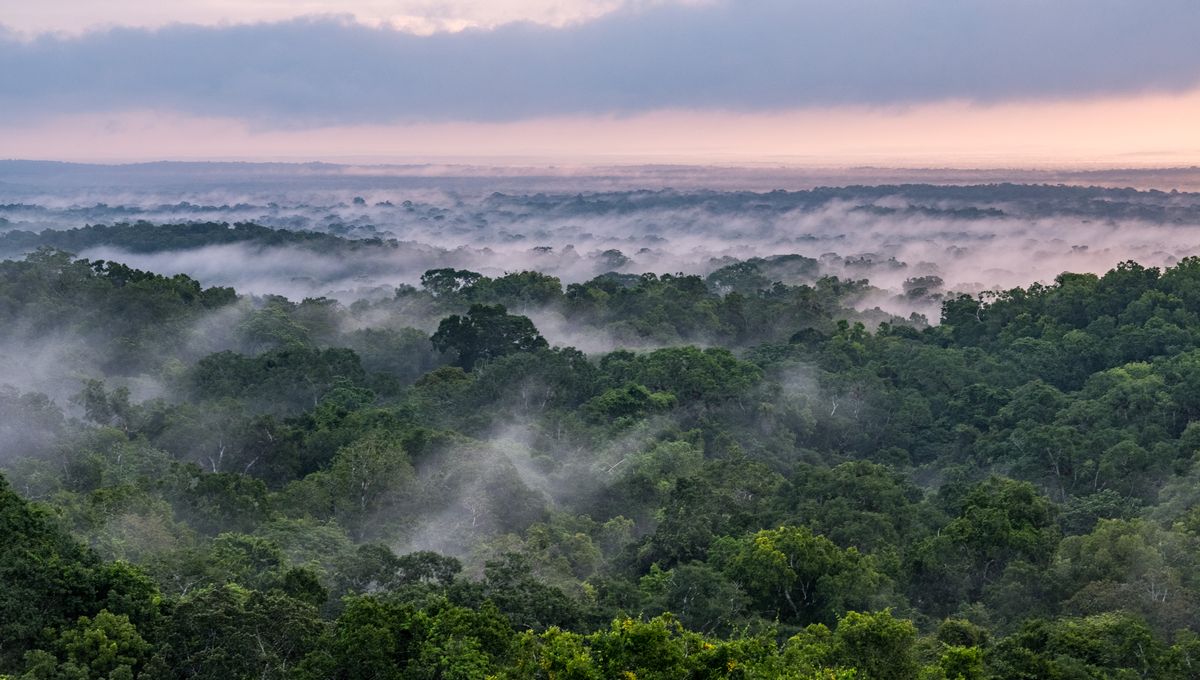
Hidden below Guatemala’s lush Petén rainforest lies an ancient city not touched by humans for more than 1,000 years, but in its heyday, it was home to millions of Mesoamericans who built a sophisticated, sprawling empire. Now, for the first time, a team of international archaeologists has discovered and mapped tens of thousands of ancient structures using airborne light detection and ranging technology (LiDAR) over 2,100 square kilometers (810 square miles) of the nation’s lowland.
LiDAR was first applied to this area in 2009 and focused on just the immediate surroundings of individual sites. Archaeologists first discovered the vast metropolis in February, National Geographic reported, led by Guatemalan science nonprofit group the PACUNAM Foundation. Publishing their work over six months later, the team confirms the presence of more than 61,000 ancient structures, including houses, large palaces, ceremonial centers, and pyramids.
LiDAR pierces through the thick forest canopy to reveal changes in elevation, allowing the researchers to identify these topographical features as manmade walls, roads, and buildings without ever having to set foot on the ground. With this information, they are able to create three-dimensional maps in a matter of minutes, avoiding years of arduous fieldwork.
“Seen as a whole, terraces and irrigation channels, reservoirs, fortifications, and causeways reveal an astonishing amount of land modification done by the Maya over their entire landscape on a scale previously unimaginable,” explained team member Francisco Estrada-Belli in a statement.
In all, more than 61,000 ancient structures have been accounted for in the surveyed region, indicating that up to 7 to 11 million people were present at the height of the Late Classic period, 650-800 CE. For scale, New York City has about 8.5 million people. These populations were unevenly distributed with different levels of urbanization and were spread out over more than 2,100 square kilometers (810 square miles). This land was modified in some way for the intensive agricultural production needed to support the massive population for hundreds of years.
“It seems clear now that the ancient Maya transformed their landscape on a grand scale in order to render it more agriculturally productive,” said Maya archaeologist Marcello A. Canuto. “As a result, it seems likely that this region was much more densely populated than what we have traditionally thought.”
The international team also mapped extensive causeways and networks connecting the various urban centers, which they say highlights just how interconnected these different city centers were and how much their inhabitants were willing to invest in defensive systems in the event of warfare.
As with any new discovery, the authors conclude that their findings “generate new questions, refine targets for fieldwork, elicit regional study across continuous landscapes, and advance Maya archaeology into a bold era of research and exploration.”
The study is published in Science.
An earlier version of this article was published in September 2018.
Source Link: Thousands Of Ancient Maya Structures Revealed By Jungle-Penetrating Lasers